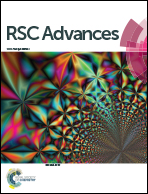High-rate capability of bamboo-like single crystalline LiFePO4 nanotubes with an easy access to b-axis 1D channels of olivine structure
Abstract
Surfactant aided sol–gel method is used to fabricate highly crystalline carbon-coated LiFePO4 (LFP) in two contrasting microstructural forms: (i) nanoparticulate crystallites (LFP-NP), and (ii). bamboo-like single crystalline nanotubes (LFP-NT) obtained using template-assisted method. LFP-NT exhibit a high specific capacity (∼165 mA h g−1 at 1C-rate) and superior rate capability with reversible capacity of ∼100 mA h g−1 (∼60 mA h g−1) at a current rate of 10C (25C) with almost 100% capacity retention after 1000 cycles, whereas, LFP-NP exhibit poor capacity retention even at low C-rates (<10 mA h g−1 at 5C-rate). Although shortened pathways for Li transport exist in both the microstructures, the key point to achieve high-rate capability in LFP system is to facilitate easy access to the entry points of 1D channels running along b-axis of olivine structure. The curved cylindrical surfaces of bamboo-like nanotubes have a large proportion of these entry points. The nanoparticles have limited access to these entry points due to agglomeration, therefore exhibiting poor capacity retention at high C-rates. Fabricating LFP with microstructural-openness with a large number of accessible 1D-channel entry points on the surface of LFP is crucial for achieving high-rate capability cathode.


 Please wait while we load your content...
Please wait while we load your content...